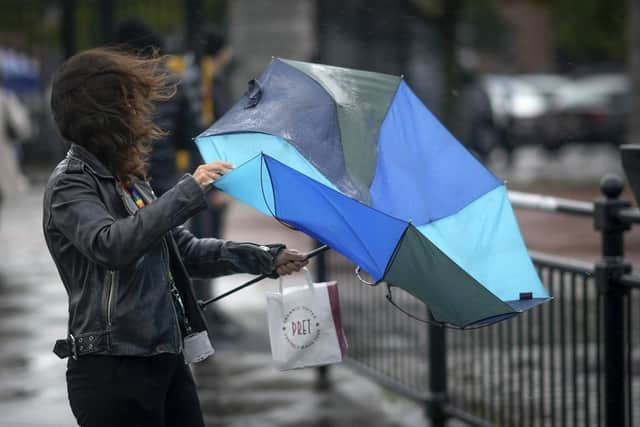What is a yellow weather warning? Explaining what each weather warning in the UK means
and live on Freeview channel 276
With the arrival of poor weather conditions, the Met Office has issued several weather warnings advising the public to expect disruption across the country.
The weather warning system is in place to keep the public safe during extreme conditions such as strong winds, rain, snow, ice, or extreme heat. The varying degrees of warnings are indicated by colour - yellow, amber and red - each of which represent the potential impact the weather may have.
Advertisement
Hide AdAdvertisement
Hide AdHere’s all you need to know about weather warnings in the UK and what they mean.
What do weather warnings in the UK mean?
There are three levels of weather warnings: yellow, amber, and red, with red being the most severe. Each will also have an impact level from very low to high, the area which is expected to affected, how long it could last and if there is likely to be knock on effects to utilities and services.


Weather warnings can be issued for any type of extreme weather, including rain, thunderstorms, wind, snow, lightning, ice, extreme heat and even fog.
Yellow weather warning meaning
Yellow weather warnings can be issued for a range of weather conditions that are expected to cause low level impacts. Most daily activities can continue without disruption, but there will be some that will be directly impacted.
Advertisement
Hide AdAdvertisement
Hide AdTravel disruption is common during yellow weather warnings, typically due to rail, ferry or air services being cancelled or road closures.


Yellow weather warnings also indicate that there could be damage to buildings or power cuts and the Met Office recommends checking the specific warnings which are in place in to assess if you are likely to be affected.
Even with yellow warnings, there can be a risk of injury and threat to life as a result of the poor weather.
Amber weather warning meaning
Amber weather warnings are assigned when there is an increased likelihood of impacts from severe weather, which could potentially disrupt the public’s plans.
Advertisement
Hide AdAdvertisement
Hide AdAs with yellow warnings, this means there is the possibility of travel delays, road and rail closures, power cuts, and the potential risk to life and property. In the case of amber weather warnings, the Met Office recommends that you take action to protect yourself and your property ahead of the severe weather, by changing any plans which could be impacted.


Red weather warning meaning
Restricted to very dangerous weather, red weather warnings are issued when there is a high level of threat. There is a strong likelihood of risk to life, substantial disruption to travel, energy supplies, and possible damage to property and infrastructure with power cuts likely.
They are the rarest of weather warnings and the Met Office advises taking action immediately to keep yourself and others safe from the impact of the severe weather, such as avoiding travel and securing external areas of your property.
When in doubt, check the details of the current weather warning and follow the advice of the emergency services and local authorities. Remember that advice for your local area may be different from other nearby locations and you should follow the guidance for the area you’re in or the closest region.
Should I drive in a red weather warning?
Advertisement
Hide AdAdvertisement
Hide AdYou can legally drive in a red weather warning and your insurance is unlikely to be invalid due to an ongoing weather warning. However, the Met Office states that there is a strong risk to life during a red weather warning and advises people to avoid travel where possible for their own safety.
Typically there will be road and travel disruption during a red weather warning for reasons such as flooding, road closures or damage to infrastructure.
How can I access Met Office weather warnings?
Met Office weather warnings are available on its website, social media, or via Met Office app, and will likely be reported on the radio and the TV.
You can also sign up for email alerts or the RSS feed of the Met Office.
Comment Guidelines
National World encourages reader discussion on our stories. User feedback, insights and back-and-forth exchanges add a rich layer of context to reporting. Please review our Community Guidelines before commenting.
